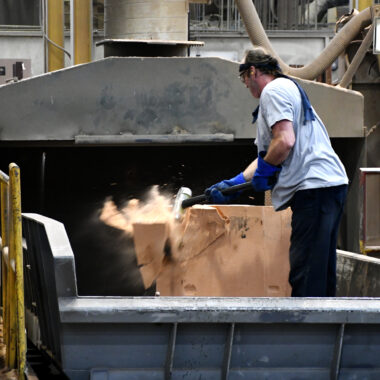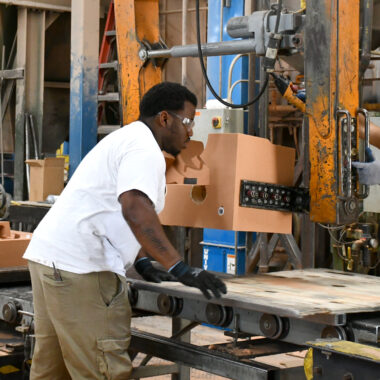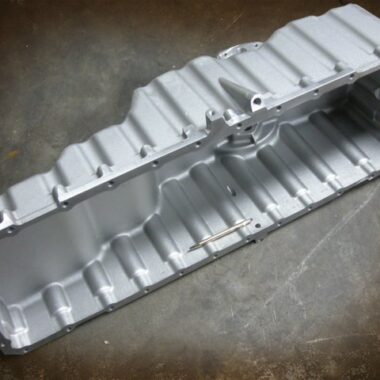Precision in Practice: The Art About Aluminum Casting
Wiki Article
Check Out the World of Aluminum Spreading: Expert Strategies and tricks
In the world of production, aluminum spreading stands as an essential procedure, vital for the creation of a vast range of items. As we navigate via the world of light weight aluminum spreading, there exists a realm of expert tricks and techniques that can raise the top quality of the final items and streamline the production procedure.
The Fundamentals of Aluminum Casting
Light weight aluminum spreading, an essential process in manufacturing, entails the putting of molten aluminum right into a mold and mildew to accomplish desired structures and shapes. This functional method is commonly utilized throughout different industries as a result of light weight aluminum's outstanding buildings such as high strength-to-weight proportion, corrosion resistance, and thermal conductivity.The procedure begins with the melting of aluminum in a heating system at temperatures going beyond 1220 ° F(660 ° C ) When the light weight aluminum reaches its liquid state, it is put into a pre-designed mold and mildew tooth cavity. The mold and mildew, normally made from materials like steel or sand, establishes the final form of the cast light weight aluminum part.
After pouring, the light weight aluminum is left to cool down and solidify within the mold - about aluminum casting. This cooling duration is essential as it establishes the integrity and top quality of the end product. As soon as solidified, the mold and mildew is gotten rid of, revealing the freshly formed aluminum spreading
Expert Tips for Successful Casting
To attain optimum results in light weight aluminum spreading, meticulous interest to information throughout the mold style stage is essential for making sure effective outcomes. One insider idea for effective spreading is to carefully think about eviction system. The style of eviction system plays an essential function in regulating the circulation of liquified light weight aluminum right into the mold cavity, guaranteeing appropriate filling and lessening issues like air entrapment. In addition, keeping the correct metal temperature level is vital for attaining top notch spreadings. Surveillance and controlling the steel temperature throughout the casting process can aid protect against problems such as premature solidification or porosity in the last product.In addition, one more vital pointer is to correctly prepare the mold surface area. A well-prepared mold surface area can add to far better metal circulation, reduced disturbance, and boosted surface coating on the actors part. This preparation may entail making use of finishings or therapies to improve mold and mildew launch and prevent metal/mold interactions that could bring about issues. By paying close focus to these insider pointers, suppliers can enhance the high quality and efficiency of their aluminum casting processes.
Advanced Methods in Aluminum Casting
Utilizing sophisticated methodologies and innovative approaches, the realm of light weight aluminum spreading has seen a significant evolution in the direction of advanced methods that push the boundaries of typical practices. One such strategy is vacuum cleaner casting, which entails producing a vacuum cleaner environment to get rid of air from the mold and mildew cavity, leading to better and even more detailed spreadings with minimized Resources porosity. Additionally, financial investment spreading, also understood as lost-wax spreading, is a polished approach that enables complicated shapes and thin wall surfaces, leading to specific and comprehensive light weight aluminum components.
Additionally, progressed simulation click here for info software program plays a vital role in maximizing casting designs and predicting potential problems, permitting adjustments to be made before the real spreading procedure begins. By welcoming these innovative strategies, producers can boost their aluminum casting capacities to brand-new heights, satisfying the needs of modern industries with accuracy and advancement.
Understanding Various Casting Methods
Different spreading approaches offer unique benefits and are picked based on factors such as the intricacy of the layout, production volume, material requirements, and expense factors to consider. One of the most typical spreading techniques is sand spreading, where a mold is created utilizing sand as the key material.One more prominent casting technique is die spreading, which includes injecting liquified steel into a mold and mildew tooth cavity under high pressure. Die spreading is recognized for its high precision, smooth surface area finish, and the capacity to produce intricate shapes with limited tolerances. Gravity casting, on the various other hand, depends on gravity to fill up the mold link and mildew tooth cavity with molten steel. This technique is ideal for producing simpler forms and is affordable for small to tool production runs. By recognizing the nuances of different spreading techniques, producers can make enlightened decisions to optimize their manufacturing procedures and accomplish the wanted results.
Maximizing Effectiveness in Casting Procedures
With a solid grip of the nuances of different spreading techniques, suppliers can simplify their procedures to boost efficiency in steel construction processes. Optimizing efficiency in casting operations calls for a methodical technique that concentrates on optimizing every step of the spreading procedure. One vital approach is to carry out lean production concepts to eliminate waste and boost general performance. By identifying and getting rid of bottlenecks in the manufacturing line, makers can enhance operations and minimize preparations.Moreover, purchasing sophisticated innovation and devices can significantly enhance performance in casting procedures. Automated systems, robotics, and computer-aided design (CAD) software application can streamline procedures, decrease errors, and rise outcome. Furthermore, training workers on the current strategies and finest techniques can likewise add to optimizing performance in casting procedures.
Normal upkeep of tools and devices is critical to minimize and protect against failures downtime - about aluminum casting. Executing an aggressive upkeep routine can help determine prospective concerns prior to they escalate, ensuring smooth operations and continuous manufacturing. On the whole, by focusing on performance and continual enhancement, producers can maximize their casting procedures and remain competitive in the market

Final Thought
To conclude, the globe of aluminum casting uses a variety of opportunities for those seeking to create complex and long lasting steel items. By understanding the basics, making use of expert tips, and discovering innovative strategies, people can attain wonderful success in their spreading ventures. Comprehending the numerous casting techniques and maximizing efficiency in procedures are essential elements to attaining top quality cause light weight aluminum spreading. With commitment and practice, one can absolutely unlock the capacity of this versatile metalworking process.
One such technique is vacuum cleaner spreading, which involves producing a vacuum environment to eliminate air from the mold and mildew cavity, leading to greater quality and even more complex castings with lowered porosity (about aluminum casting). Furthermore, financial investment spreading, likewise recognized as lost-wax spreading, is a refined method that allows for thin wall surfaces and intricate forms, resulting in specific and in-depth light weight aluminum parts
One of the most usual casting approaches is sand spreading, where a mold is produced making use of sand as the key material.One more preferred spreading technique is die casting, which includes infusing molten steel right into a mold and mildew cavity under high pressure. Recognizing the different casting techniques and enhancing performance in procedures are key parts to achieving high-quality outcomes in aluminum spreading.
Report this wiki page